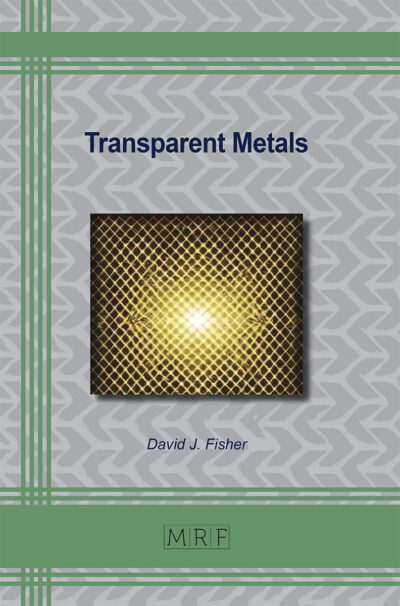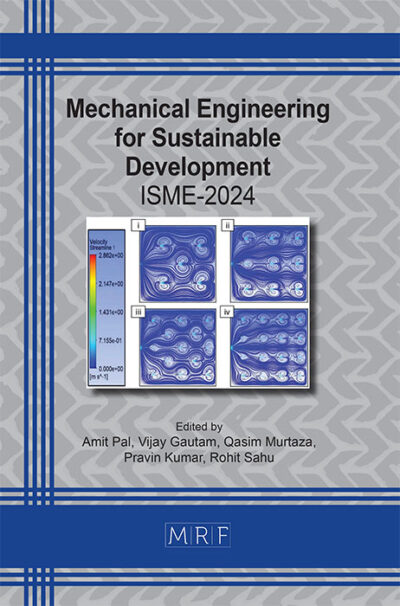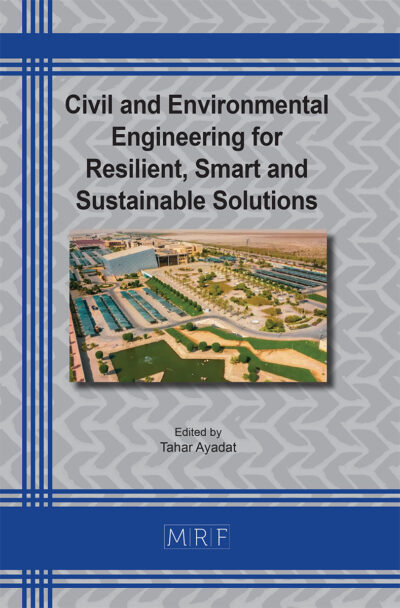Effect of waste-based geopolymers on mechanical and geotechnical properties of expansive soil
Rasil KODAH, Samer RABABAH, Mohammad Ali KHASAWNEH, Hussein ALDEEKY, Dima MALKAWI
Abstract. Geopolymers are cementitious materials that are known for their eco-friendly properties. They have the unique ability to harden quickly, exhibit impressive strength, and show minimal shrinkage. Additionally, they have excellent resistance to both acidic and alkaline corrosion. The impressive qualities of this product offer long-lasting benefits in enhancing the strength, stability, and durability of the subgrade soils. The current study aims to investigate the use of Olive Waste Ash – Geopolymer (OWA-GP) as a sustainable and environmentally friendly substitute for cement in soil stabilization using unconfined compressive strength (UCS). To evaluate the geopolymer’s UCS, various combinations of these materials were tested, along with alkalis (NaOH and Na2SiO3) in ratios (SS/SH; 1:2, 1:1, 3:2, 2:1), concentrations (5M, 10M, and 15M), and source material content (10%, 20%, and 30%) by weight of soil, with curing periods of 1, 7, and 28 days. OWA-GP (10M 3:2, 20%) achieved a maximum strength of 2.99 MPa after 28 days of curing. Geopolymers have been shown to outperform cement-stabilized soil and soil stabilized with cement. This demonstrates geopolymers’ superiority over cement and the possibility of expanding their use as a sustainable method of soil and ground improvement.
Keywords
Geopolymer, Industrial Waste Ash, Alkaline Activation, Soil Stabilization, Low-Carbon Footprint
Published online 2/25/2025, 10 pages
Copyright © 2025 by the author(s)
Published under license by Materials Research Forum LLC., Millersville PA, USA
Citation: Rasil KODAH, Samer RABABAH, Mohammad Ali KHASAWNEH, Hussein ALDEEKY, Dima MALKAWI, Effect of waste-based geopolymers on mechanical and geotechnical properties of expansive soil, Materials Research Proceedings, Vol. 48, pp 549-558, 2025
DOI: https://doi.org/10.21741/9781644903414-60
The article was published as article 60 of the book Civil and Environmental Engineering for Resilient, Smart and Sustainable Solutions
![]() Content from this work may be used under the terms of the Creative Commons Attribution 3.0 license. Any further distribution of this work must maintain attribution to the author(s) and the title of the work, journal citation and DOI.
Content from this work may be used under the terms of the Creative Commons Attribution 3.0 license. Any further distribution of this work must maintain attribution to the author(s) and the title of the work, journal citation and DOI.
References
[1] Yakub A, Ahmad MM, Khan AN, et al (2020) Different Soil Stabilization Techniques. Int J Adv Sci Technol 29:7778–7791
[2] Kennedy C, Wokoma TTT, Kabari GS (2018) Stabilization of Niger Deltaic Expansive Clay Soils Using Composite Materials. Int J Adv Sci Res Eng 4:21–29. https://doi.org/10.31695/ijasre.2018.32938
[3] Behnood A (2018) Soil and clay stabilization with calcium- and non-calcium-based additives: A state-of-the-art review of challenges, approaches and techniques. Transp Geotech 17:14–32. https://doi.org/10.1016/J.TRGEO.2018.08.002
[4] Attom MF, Al-Sharif MM (1998) Soil stabilization with burned olive waste. Appl Clay Sci 13:219–230. https://doi.org/10.1016/S0169-1317(98)00007-6
[5] Davidovits J (2020) Geopolymer Chemistry and Applications. 5-th edition. J Davidovits–Saint-Quentin, Fr 5:680
[6] Marsh A, Heath A, Patureau P, et al (2018) Alkali activation behaviour of un-calcined montmorillonite and illite clay minerals. Appl Clay Sci 166:250–261. https://doi.org/10.1016/J.CLAY.2018.09.011
[7] Mahamat AA, Obianyo II, Ngayakamo B, et al (2021) Alkali activation of compacted termite mound soil for eco-friendly construction materials. Heliyon 7:e06597. https://doi.org/10.1016/j.heliyon.2021.e06597
[8] Ivanović M, Nenadović S, Pavlović VP, et al (2021) The influence of thermodynamic parameters on alkaline activator of geopolymers and structure of geopolymers. Maced J Chem Chem Eng 40:99. https://doi.org/10.20450/mjcce.2021.2127
[9] Wei H, Zhang Y, Cui J, et al (2019) Engineering and environmental evaluation of silty clay modified by waste fly ash and oil shale ash as a road subgrade material. Constr Build Mater 196:204–213. https://doi.org/10.1016/J.CONBUILDMAT.2018.11.060
[10] Dassekpo J-BM, Feng W, Miao L, Dong Z (2021) Effect of Alkali Activators on Loess Geopolymer: Potential Waterproof Repair Material. J Mater Civ Eng 33:04021247. https://doi.org/10.1061/(ASCE)MT.1943-5533.0003784
[11] Murmu AL, Dhole N, Patel A (2020) Stabilisation of black cotton soil for subgrade application using fly ash geopolymer. Road Mater Pavement Des 21:867–885. https://doi.org/10.1080/14680629.2018.1530131












